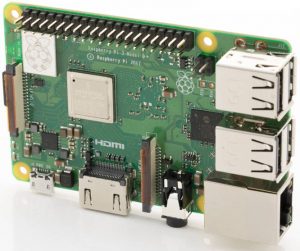
Editor:yikeshuEdit Time:2018-11-29 16:39:29

Other changes include a move to a Cypress Wi-Fi chipset, which has allowed Pi to go dual-band, now operating at both 2.4 and 5GHz.
This Wi-Fi implementation has been shielded so that near-by boards will not change its operating characteristics significantly, allowing it to be pre-certified. “When it is used for professional applications, it will not have to be re-certified,” said Wenzel.
Bluetooth remains the same – version 4.2 – but the Ethernet system is also uprated, nominally to Gbit Ethernet, but limited to 300Mbit/s because it is driven via USB 2 on-board. This is still 3x faster than the original Raspberry Pi 3.
A related change on the Ethernet interface is that this is the first Raspberry Pi that can be powered via its RJ45 Ethernet cable socket using power-over-Ethernet (PoE).
Support is not quite native, as the connections are there but a Raspberry Pi-branded ‘HAT’ (add-on board) will be required to handle power conversion and other aspects of PoE. Farnell will be stocking this when it arrives in the summer, said Wenzel.
Booting over Ethernet has also been enabled, without a micro SD Card installed in the board.
According to Wenzel, all the changes are intended to improve the computer for professional use, the result in Farnell’s case of customer feedback through focus groups and a customer survey.
It has, for example, seen Raspberry Pi used in controllers for pre-paid TV sets in hospitals, in advertising screens in cinemas, and in lift monitoring systems for smart buildings.
One requested feature customers are not going to get is on-board eMMC flash – wanted to avoid using a micro SD card in the board’s socket, according to Wenzel. Instead, the boot-over-Ethernet facility has been provided.
“The launch of the Raspberry Pi 3 Model B+ is about providing industry with a board that is perfectly suited for use in embedded products,” said Eben Upton, CEO or Raspberry Pi Trading. “Raspberry Pi has already proven itself to have stability, quality and ease-of-use combined with an attractive price point. This supercharged Raspberry Pi 3 Model B+ takes it one step further, easing compliance certification, reducing cost, and all at the same price of $35.”
The board retains the same mechanical footprint and pin out as both the Raspberry Pi 2 Model B and Raspberry Pi 3 Model B. It will also work from the same power supply.
As has been the case throughout Raspberry Pi’s existence, RS Components will also be supplying the Model B+ .
Raspberry Pis for both Farnell and RS are made at Sony’s plant in South Wales.
Farnell, through its element14 brand, will also be selling a starter pack with four official Raspberry Pi items: a Pi Model B+, an SD Card, the PSU and the case, for $62.99 (plus tax and shipping).